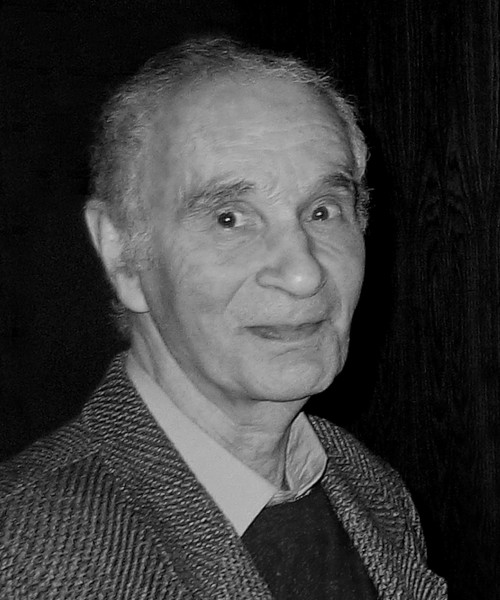Leonid Grigorievich Sodin
(Contributed by Alexander Konovalenko and Oleg Ulyanov)
 Leonid Grigorievich Sodin (Credit: Institute of Radio Astronomy of National Academy of Sciences of Ukraine)
Leonid Grigorievich Sodin (Credit: Institute of Radio Astronomy of National Academy of Sciences of Ukraine)
Leonid Grigorievich Sodin, a distinguished radio astronomer and radiophysicist, was born on December 9, 1929, in Kharkiv. In the early 1950s, he graduated from the Faculty of Radio Engineering of the Kharkiv Polytechnic Institute - one of the leading institutions in the Soviet Union for radio science. He spent approximately a decade working in various enterprises in Ukraine and Russia involved in the development and application of radio-electronic equipment. Despite the technological limitations of that era, Sodin's strong theoretical background enabled him to achieve results that remain relevant to this day. This is evidenced by his successful defense in 1960 of his Candidate of Sciences (PhD-equivalent) dissertation at the Leningrad Institute of Precision Mechanics and Optics on the topic "Issues in the Theory of Spectral Analysis Methods."
Following this, Dr. Sodin joined the Institute of Radiophysics and Electronics of the Ukrainian Academy of Sciences, becoming a member of the research group led by Academician Semyon Yakovlevich Braude, the founder of decameter-wave radio astronomy in Ukraine. During this period, a new experimental foundation for low-frequency radio astronomy was being established, and Dr. Sodin played a pivotal role in its development. He proposed effective methods for constructing large radio telescopes operating below 30 MHz, optimizing parameters such as sensitivity, beam directivity, sidelobe levels, ground boundary effects, and cost-efficiency. He also developed the theoretical principles and practical implementation of large phased antenna arrays using discrete, asynchronous, electronically controlled beam steering systems.
This work culminated in the construction of the UTR-2 radio telescope in 1971, which remains the largest and most sensitive radio astronomical instrument operating at frequencies below 30 MHz. Based on this work, Dr. Sodin defended his Doctor of Sciences dissertation in 1976 at the Institute of Space Research of the USSR Academy of Sciences, titled "Research and Development of Decameter-Wave Radio Telescopes with Electronic Beam Steering." In 1977, he and his co-authors were awarded the USSR State Prize.
Dr. Sodin's scientific career was marked by its diversity, originality, and a rare balance of theoretical and experimental approaches. His work included observations of the Sun and extended radio sources, and he made significant contributions to the interpretation of data - particularly in solving ill-posed inverse problems and developing new image reconstruction techniques in collaboration with Yuri Bruck.
In the late 1970s, in collaboration with Aleksander Konovalenko, he discovered a remarkable astrophysical phenomenon: recombination radio absorption lines in highly excited interstellar carbon atoms (with principal quantum numbers exceeding 600). This finding introduced a novel diagnostic tool for studying cold interstellar plasma. These results, achieved jointly with colleagues from the Institute of Space Research, the Lebedev Physical Institute, and the Pulkovo Observatory, earned him a second USSR State Prize in 1988.
In the early 2000s, Dr. Sodin co-authored the monograph: L.E. Kopilovich and L.G. Sodin, Multielement System Design for Astronomy and Radio Science (Kluwer Academic Publishers, 2001).
Leonid Sodin remained deeply dedicated to science throughout his life, contributing to various domains including radio astronomy, antenna theory and technology, and radio signal detection and processing. Over the course of his distinguished career, he advanced from postgraduate student and junior researcher to Chief Research Scientist - the highest scientific rank. For many years, he served as the chief designer of major projects aimed at developing low-frequency radio telescopes. His achievements significantly contributed to the establishment of the Institute of Radio Astronomy of National Academy of Sciences of Ukraine in 1985, based on the radio astronomy departments of the Institute of Radiophysics and Electronics.
Leonid Grigorievich Sodin passed away on April 20, 2019, just months before his 90th birthday.
![[IAU logo]](iau_wb_thumb.jpg)
![[URSI logo]](URSI-logo-thumb.jpg)
![[Karl Jansky at his antenna]](jansky_photo_02_thumb.jpg)
![[Reber's Wheaton antenna]](Reber_Telescope_Wheaton_thumb.jpg)
![[Dover Heights]](Dover_Heights_02_thumb.jpg)
![[4C telescope]](GB61-195_4C_telescope_thumb.jpg)
![[Ewen and horn antenna]](ewen_horn1s.jpg)
![[Dwingeloo, 1956]](Dwingeloo-1956-thumb.jpg)
![[Jocelyn Bell Burnell and Cambridge antenna used in pulsar discovery]](burnell2_thumb.jpg)
![[Lovell Telescope at Jodrell Bank]](site_1594_0001-500-334-20180316163019-thumb150.jpg)
![[Wilson, Penzias, and Bell Labs horn antenna]](wilson-penzias-horn_thumb.jpg)
![[6-m Millimeter Radio Telescope in Mitaka, Japan]](6m-thumb.jpg)

